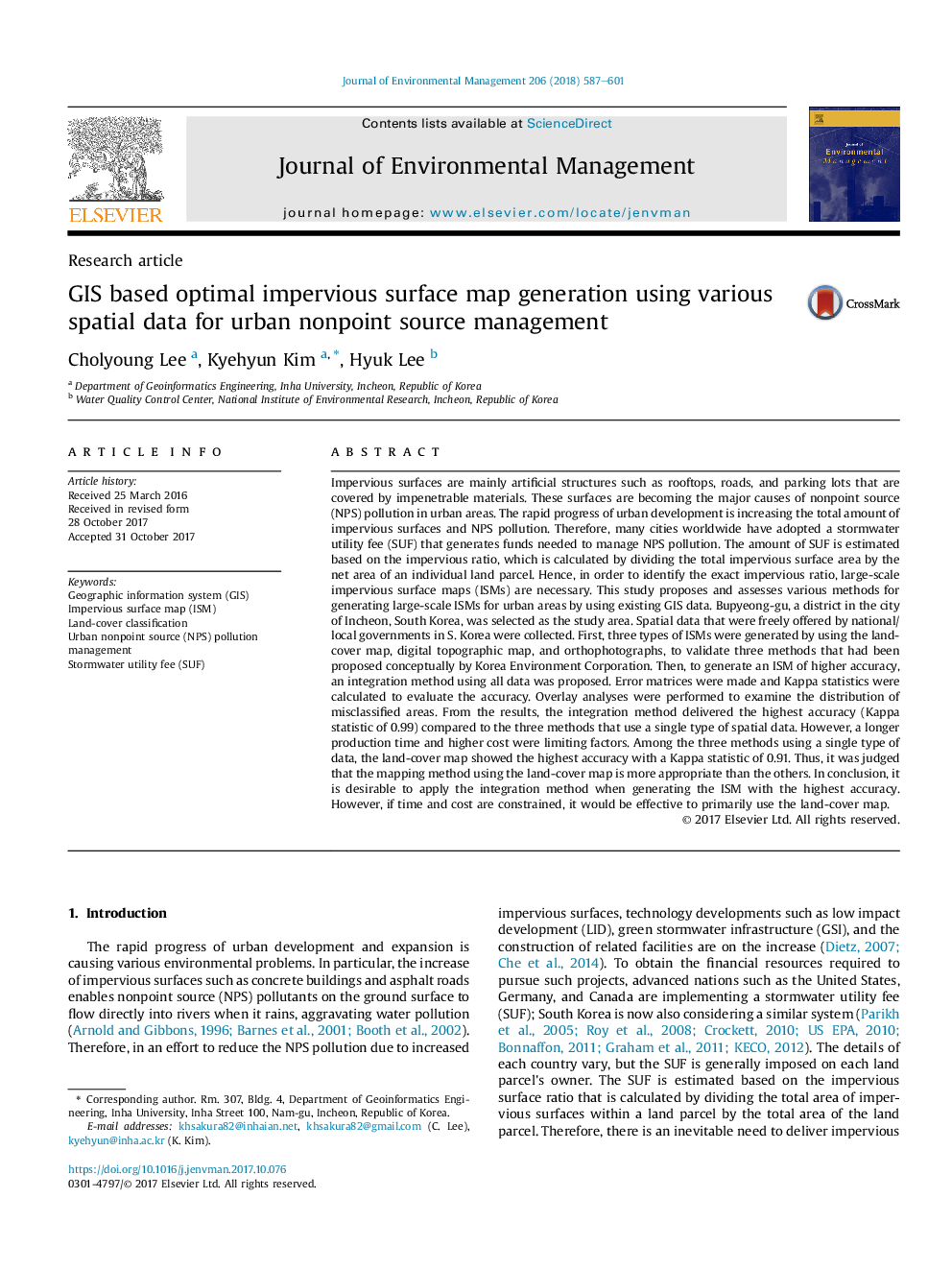| Article ID | Journal | Published Year | Pages | File Type |
|---|---|---|---|---|
| 7478804 | Journal of Environmental Management | 2018 | 15 Pages |
Abstract
Impervious surfaces are mainly artificial structures such as rooftops, roads, and parking lots that are covered by impenetrable materials. These surfaces are becoming the major causes of nonpoint source (NPS) pollution in urban areas. The rapid progress of urban development is increasing the total amount of impervious surfaces and NPS pollution. Therefore, many cities worldwide have adopted a stormwater utility fee (SUF) that generates funds needed to manage NPS pollution. The amount of SUF is estimated based on the impervious ratio, which is calculated by dividing the total impervious surface area by the net area of an individual land parcel. Hence, in order to identify the exact impervious ratio, large-scale impervious surface maps (ISMs) are necessary. This study proposes and assesses various methods for generating large-scale ISMs for urban areas by using existing GIS data. Bupyeong-gu, a district in the city of Incheon, South Korea, was selected as the study area. Spatial data that were freely offered by national/local governments in S. Korea were collected. First, three types of ISMs were generated by using the land-cover map, digital topographic map, and orthophotographs, to validate three methods that had been proposed conceptually by Korea Environment Corporation. Then, to generate an ISM of higher accuracy, an integration method using all data was proposed. Error matrices were made and Kappa statistics were calculated to evaluate the accuracy. Overlay analyses were performed to examine the distribution of misclassified areas. From the results, the integration method delivered the highest accuracy (Kappa statistic of 0.99) compared to the three methods that use a single type of spatial data. However, a longer production time and higher cost were limiting factors. Among the three methods using a single type of data, the land-cover map showed the highest accuracy with a Kappa statistic of 0.91. Thus, it was judged that the mapping method using the land-cover map is more appropriate than the others. In conclusion, it is desirable to apply the integration method when generating the ISM with the highest accuracy. However, if time and cost are constrained, it would be effective to primarily use the land-cover map.
Related Topics
Physical Sciences and Engineering
Energy
Renewable Energy, Sustainability and the Environment
Authors
Cholyoung Lee, Kyehyun Kim, Hyuk Lee,
